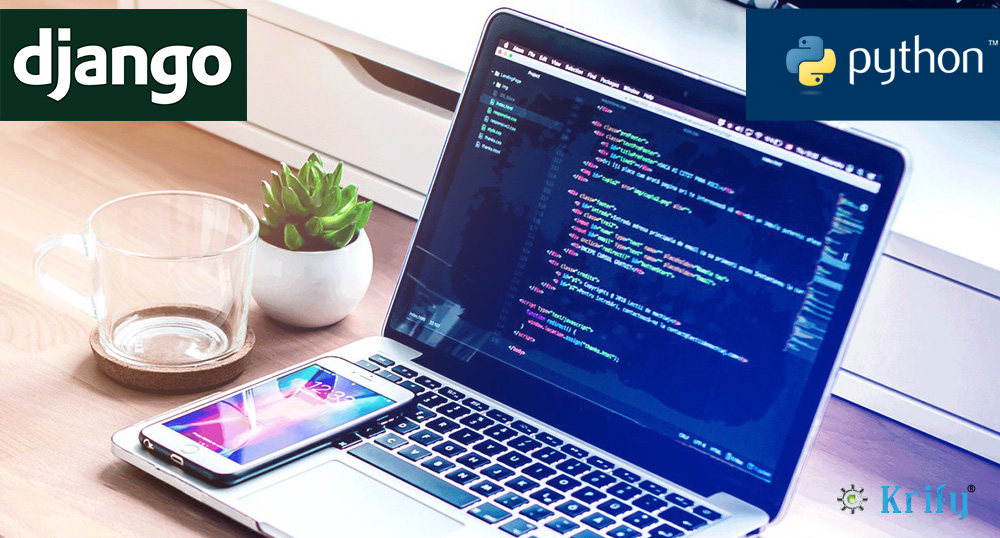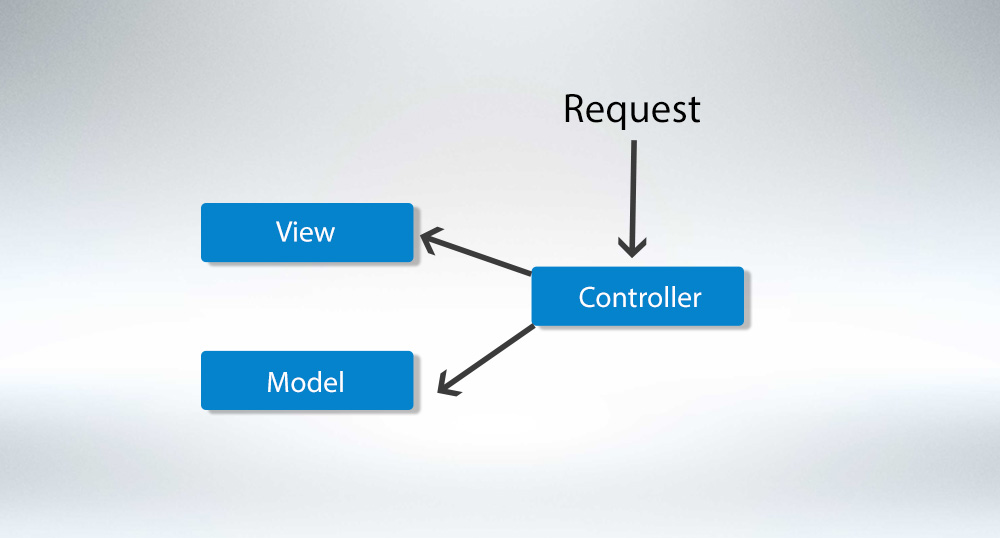TWeb development always remains to be at the top of every enthusiastic techie’s bucket list. In its core, Web development is the practice of developing and maintaining web pages and web applications. So, let’s take a deep dive into one of the most trending web development frameworks today – Django.
So now the question rises here what makes this framework so awesome? Why do web developers use Django for web development? One best thing about Django is that it is built on Python, which is an incredibly robust and dynamic programming language. Moreover, Django is an open source web framework, a newly released version Django 2 has the whole new set of features and capabilities!
What is Django?
Django is a marvelous framework for web developers because it provides the support required for database-driven websites that contain user authentication, contact forms, file uploads, and more. Instead of developing all these from scratch, you can use the Django framework and utilize these components that are built in, and the web developers can focus their time on improving the web applications instead.
Due to this, Django gives high-quality and transparent code writing, which is an essential perspective of this framework. Even it offers various other features like an automatic administration Interface or the Object Relational Mapping(ORM).
Why Choose Django?
Let’s take a look at few of the features why most of the web developers choose the Django web development that makes this framework an absolute no brainer for web developers:
- Secure: Django is developed on python due to which, Django also reaps the benefits of the widely active Python web developers community. It helps the Django web developers to avoid many security mistakes such as cross-site scripting, SQL injection, clickjacking, and CSRF. Django offers a user management system which allows you to manage users better.
- Fast: Django web development allows with clean and pragmatic design and so the Django web developers to complete their apps as fast as possible. Django takes much care of the hassle of web development without needing to reinvent the wheel. The code reusability is essential for any Django web developer.
- Scalable: Django code is very highly scalable as technology is evolving, writing code and executing them is essential. Many high-value websites like Instagram and Disqus utilizes Django for its back-end process. Django allows with a proper framework to grow your website and add more functionalities.
- Set of Packages: Django provides tons of components and libraries which help you speed up the entire web development process. Everything that is needed for the Django web development will be taken care of by Django frameworks such as standard libraries, packages, user authentication, site maps, content administration, and many others.
- Versatile: Django is used to build all sort of things from the content management system to social networks to scientific computing platforms. All this tells Django is exceptionally versatile in all fields.
Django Architecture
Let’s check the Django Architecture. In general, Django follows an MVC-MVT architecture.
MVC is used for developing web publications in which we break the code into multiple segments. Here we have three layers Model, View, and Controller.
- Model: This is the back end where you can determine your database. Model is used for caching and securing your data.
- Views: View is all about the presentation whatever the user can view is referred to as View. In Django templates, Views are HTML.
- Controller: Controller acts as the medium. It is a business trick which communicates with the model and view.
So far we are clear with MVC, let’s take a look at what MVT means.
MVT Stands for Model View Template in which every user interface has a pre-defined template. Let’s understand with an example in a better way. Imagine that you want to write various static HTML forms like Greetings to user1, Greeting to user2, and so on. Now with Django template, you will have only one file that prints hello along with the variable name. Python Django templates excel at maximizing code reusability by allowing variables to be substituted within the template using logic!
Now here raise the question, where is the controller? – In the case of MVT, Django has inbuilt functionality of taking responsibility of the Controller part. It was clear with the Architecture; let’s understand how Django works.
The image depicts a template functioning as the front end, interacting with the View. The Model serves as the backend in this architecture. Here the View will access both the model, the templates, and maps it to a URL after this, Django plays the role of controller and servers it to the user.
This sound so simple. Let’s get started by Installing Django and Web developing Apps.
Django Installation
Django is a Python-based web Framework. First, you need to install Python by visiting https://pythin.org/downloads/. Once done with the download, install, and run it. After installation, make sure to check the version you installed, using the below code as follow:
To install Django, first, you need to know pip concept, which is a package manager for python. Using this, pip makes installing and uninstalling all the packages of Python much simpler. Even you need to install pip on your system, for this, you need to go to https://pip.pypa.io/en/latest/installing/ and follow the instructions.
Then you can build an implicit environment for all your projects like this:
Install Django
Pip commands within a VM allow you to efficiently connect Django. To ensure your VM is active, just run the following command:
Using this you can download and install all the latest Django packages. Now you are got ready to start with your own Django web development.
Different versions of Django Framework
Let us check some of the versions of the Django web framework.
- Django 1.11
- Django 1.9
- Django 2
Let’s go in deep with Django versions,
Django 1.11 – #1 Python Web Development
Python is one of the top programming languages on the planet. For a few reasons:
- It’s proven and scalable
- It’s open-source
- Internet of Things and Raspberry Pi
- It’s leading the change for future technology
Python is used to run the backend of Instagram, Pinterest, NASA, Mozilla, and many others. Internet of Things(IoT) and Raspberry PI associated devices are coming in waves. The simplest way to associate to these devices is by using the Raspberry Pi and writing the code in Python. Python is adaptable, so it makes controlling real-world objects with Raspberry Pi efficiently.
If you work with Python, the chances are excellent. You need internet-connected data that store securely and is reliable. This is where Django comes in. Django is a web framework that can control all of your data and manage it better than any web framework out there.
Django is the #1 web framework for python basing on a reason: it’s secure enough for the starters and yet robust enough for the pros. Instagram uses Python by way of Django. So does Pinterest, Nasa, and Mozilla. It may not be the only technology that they use but its the backbone of all of them.
Django 1.9 – # 1 library build a blog
Django 1.9 empowers developers to build advanced and modern blogs with ease. his reigns as the number one Python web framework. Use Django Rest Framework in Blog API section to create a robust RESTful API service.
Django 2 – the Ultimate web development Bootcamp
Using this, we can build three types of complete websites:
- Word Counting Website: A simple website to count the most frequently used words in a piece of text. Let’s see how:
- Install Django
- Create a new project
- Work with Django’s URL routing
- Submit and handle HTML form data
- Personal Portfolio: Design your portfolio to showcase to previous projects and a fully functional blog, even you can add apps to your project and also below as:
- Work with databases including SQLite and Postgres
- Access the admin panel
- Create super users
- Create virtual environments
- Make a responsive website with Bootstrap 4
- Work with static and media files
- Product Hunt Clone: This simplified version of the impressive website is created to share new tech products. Let’s check how:
- Work with the authentication system
- Reuse templates
- Create model relationships
- Add icons via Iconic
Tweetme – Develop a Twitter-like app step by step with Django
Social media has changed the way we communicate with each other. Social media has the power that allows doing amazing things together. Absolutely, let’s dive into how Twitter functions and what it’s used for! We can explore this by examining its core features:
- Ajax + jQuery – To Tweet messages. Using which you can tag users directly, Use hashtags, Integrate Bootstrap for this you can use Ajax design within a Bootstrap Modal, Django Rest Framework.
- Ajax – To Follow users, like posts, Retweet posts, class-based views, custom template tags, counting characters in a form, first registration, and much more.
Python eCommerce – Develop a Django eCommerce Web application
Step by step process to develop Django eCommerce app
- Developers use Django to build the app for speed, both in functionality and in development time.
All these above will make you clear all about the Python and Django web development by choosing the best version. Django is the best framework to choose for the Python Django web development.
Krify is the leading web and mobile app development company in India and UK having hands-on digital marketing services. We have well-experienced mobile and web app developers with knowledge on emerging technologies. Are you looking for web app development using Python and Django web frameworks? Reach us today for a free quote.









